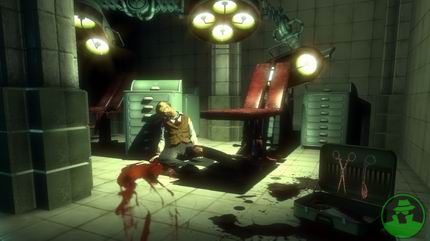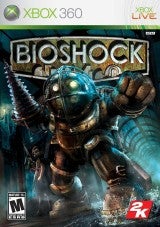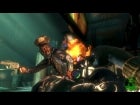GameSpy: What is the hardest part of developing BioShock?
Ken Levine: We feel as though the first-person shooter genre has not really evolved since Half-Life. If you look at Gran Turismo for example, you can't really go back to playing Ridge Racer after playing Gran Turismo because know you expect that you can tune your car and modify your car. And when you play Grand Theft Auto, you can't really go back and play Stuntman; and when you played Half-Life, you couldn't go back to DOOM. I think, you know, when DOOM 3 came out, we kinda saw that and how it was to go back.
So we were saying, "How are we going to move the genre forward?" because as a gamer, I'm getting tired of the same clichés. One of the biggest challenges is figuring out what we wanted to do with the genre, and how we could change, but how we could do it without confusing people about what we were doing. That was really challenging. It's very easy for people to identify a game and genre if it has fewer features than what they might expect. People look at BioShock and say, "What is it?"
When you add more than what people expect -- we have everything that DOOM 3 has, and then we have all this other stuff (weapon crafting, character choice and plasmids, and hacking), people get a little confused as to whether it's an RPG or an adventure game. No, what it is, is a first-person shooter, and our goal with BioShock is that after people play it, then that's what they'll start to expect from the first-person shooter.

GameSpy: Tell us a little more about the team working on BioShock.
Levine: The Irrational guys in Boston are the guys who originally worked on System Shock 2 and just did S.W.A.T. 4, and are now working on BioShock. We have around 60 people on the team and we've also got a bunch of people in Australia who worked on the Freedom Force games and also on TRIBES: Vengeance, and of course some of us even worked on Thief back in the day, too. The team has a pretty spotless record.GameSpy: How difficult is it to craft "atmosphere" in a project like this?
Levine: Well, if you judge it by how many times we failed, then it was pretty difficult. We didn't hit it until less than a year ago. I remember the first demo we delivered to 2K Games, after they spent millions of dollars on buying us, was something that I brought to them and I said, "You know what? This is a piece of shit!" And to their credit (they said), "OK, well what are you going to do about it?" And instead of flipping out, we sat down and made a bunch of changes; we refocused and we got the world right.
That was a huge process. Originally the game didn't look anything like it is now. It wasn't this beautiful, unique utopia, but instead it was very traditional looking. We didn't have the little girls and the big daddies; we didn't have that relationship, and it really didn't have the heart of what makes BioShock. So we said that instead of trying to make the whole thing at once, let's try and get one room right. Let's get one character right. We didn't have any monsters or anything like that, so we concentrated on doing one thing at a time. We just worked on it and worked on it until we had one thing right, and that's how the game evolved.





